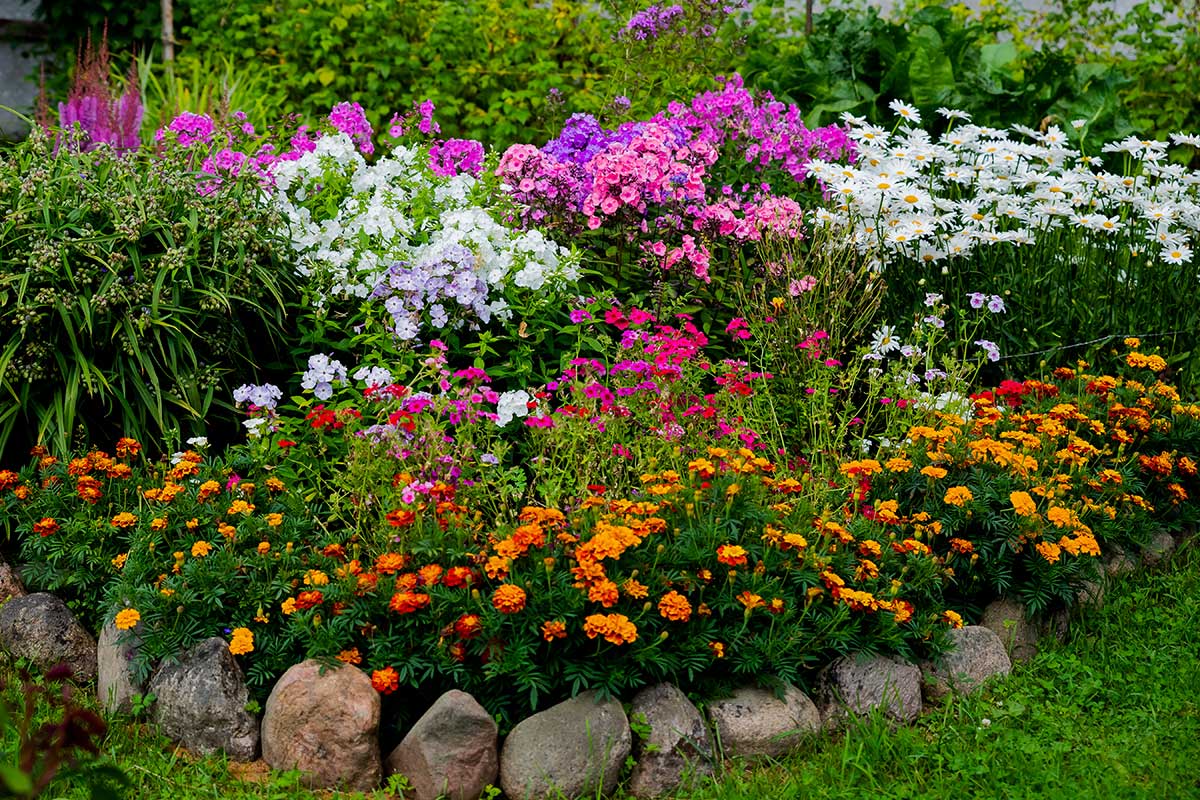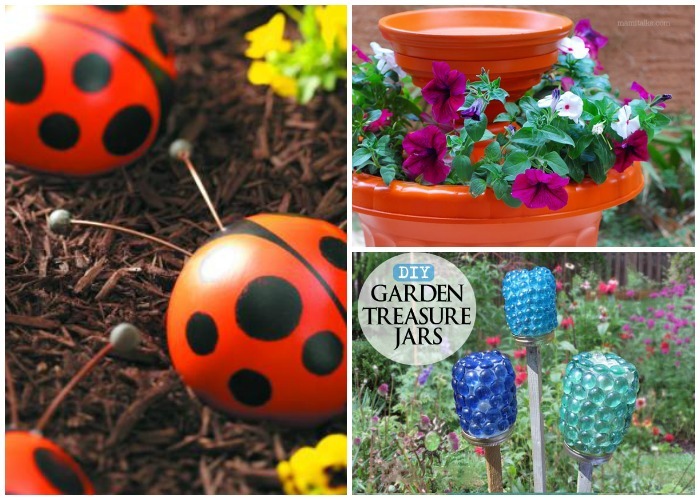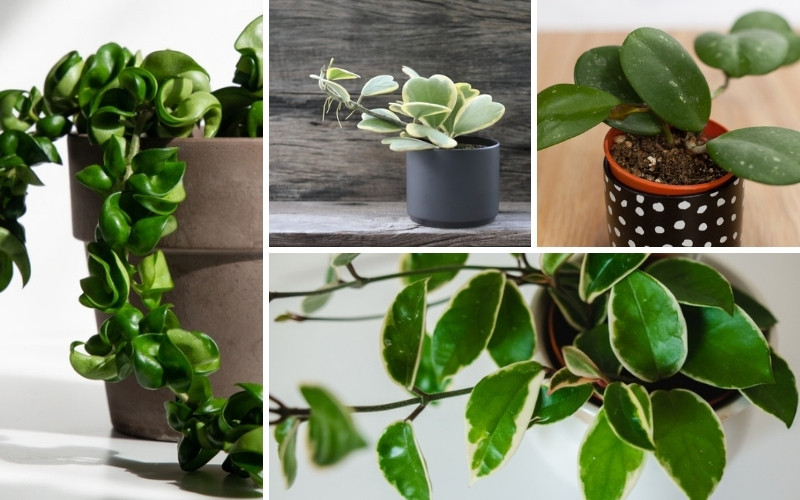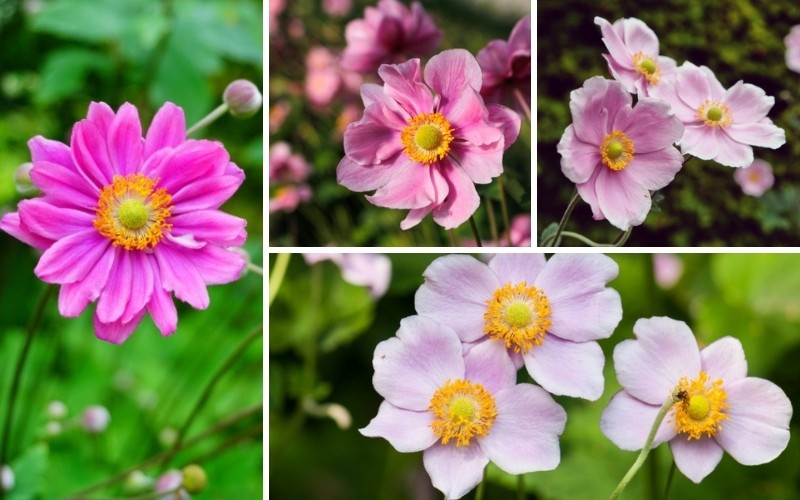
With over 100 species of flowers in the genus of anemone (common name windflower) there is much variation in these delightful little flowers. While they are all perennial flowers that thrive in USDA plant hardiness zones 3 through 8, depending on the species and cultivar; their appearance, size and blooming time varies.
Japanese Anemone — Late Summer and Fall Blooming
Japanese anemones (Anemone ‘hybrida’, Anemone ‘hupehensis’, Anemone ‘vitifolia’ and Anemone ‘tomentosa’) are native to China but have been grown in Japan for centuries. These anemones bloom in late summer until the fall frost. While they tolerate full sun, they perform best in partial shade especially in warmer climates. They prefer humus-rich, well drained soil with average pH and thrive in USDA plant hardiness zones 4 through 10, depending on the cultivar. Japanese anemones take a year or two to become established in the perennial bed but will soon spread into colonies and naturalize well in the garden. Once established Japanese anemones require little care.Some popular varieties include:
Serenade (Anemone X ‘hybrida’)
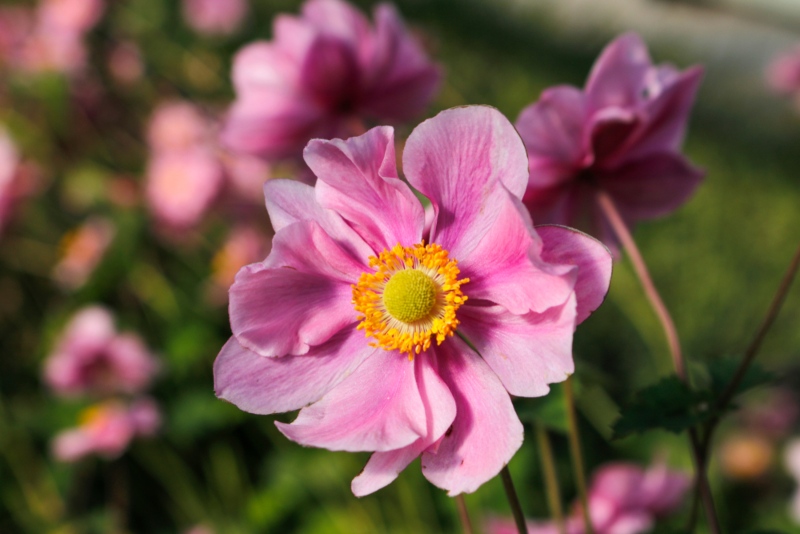
This variety produces semi-double pink flowers on plants that grow to heights of 3 feet or more. Foliage is dark green, and stems are wiry. Serenade will tolerate full sun as long as the soil is not allowed to dry out completely. Some shade during the hottest part of the day is preferred.
Honorine Jobert (Anemone X ‘hybrida’)
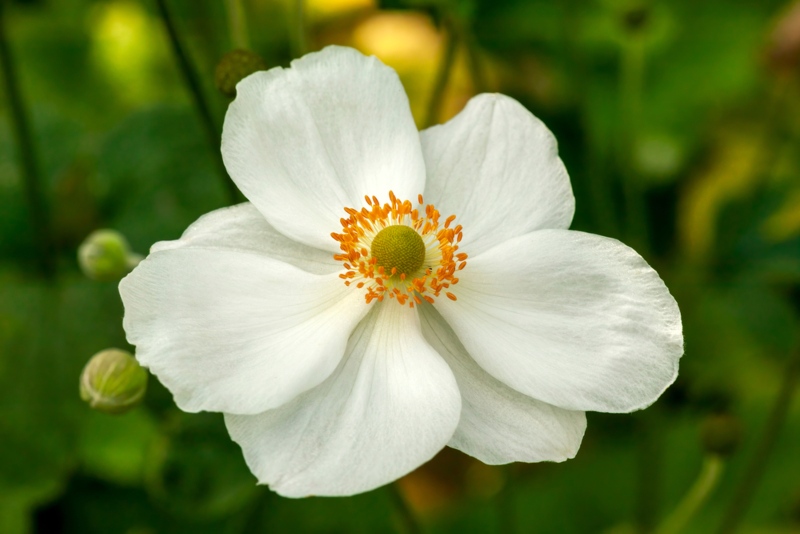
This variety produces snow-white, cup shaped flowers with an eye-catching yellow/orange center. It has dark green, wiry foliage that sways in the breeze. It reaches heights of 5 feet when in bloom. Honorine Jobert blooms from mid- to late-summer to well into the fall. It makes an excellent cut flower and is ideal for planting in cottage gardens where it can be allowed to naturalize.
September Charm (Anemone X ‘hybrida’)
September Charm produces masses of silvery-pink flowers with an attractive yellow center. The underside of the petals is a deeper pink creating ever-changing shades of pink as these flowers sway in the breeze. It grows to 3 to 4 feet and spreads to 2 to 3 feet. It can be grown in either full or partial sun.
Anemone ‘vitifolia’ Robustissima
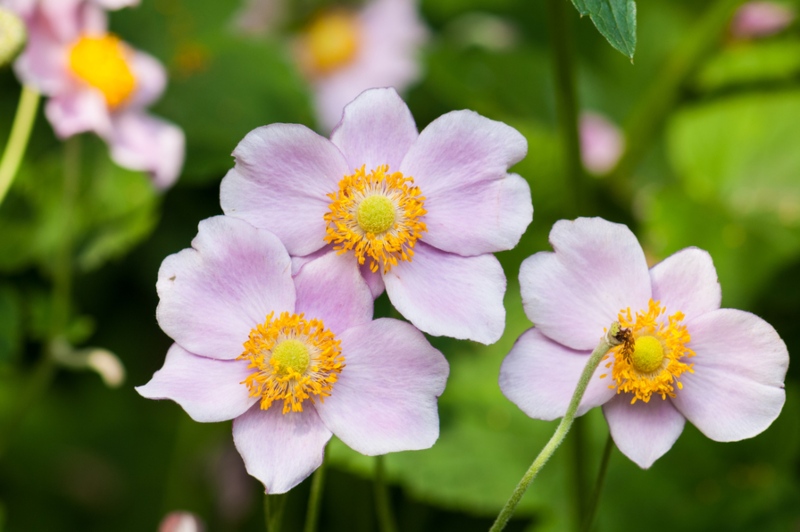
This variety produces towering plants that range from 4 to 6 feet in height with a spread of 3 feet. It prefers full or partial sun and thrives in USDA plant hardiness zones 7 through 10. Foliage resembles grape leaves. It blooms from mid to late summer through early fall. It can be grown as an annual in northern climates.
Pamina (Anemone ‘hupehensis’)
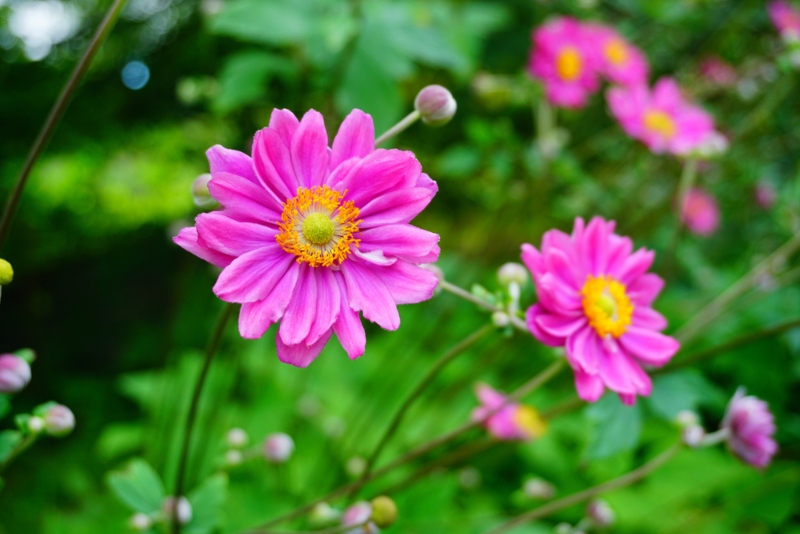
Pamina produces an abundance of double, cup-shaped flowers in deep rose with a distinctive yellow center. It reaches heights of 2 to 3 feet with an equal spread. Foliage is deep green and stems are wiry. It prefers full or partial sun. It benefits from some wind protection as the tall stems can get damaged in high winds. Pamina blooms from late summer through fall.
Anemone ‘tomentosa’
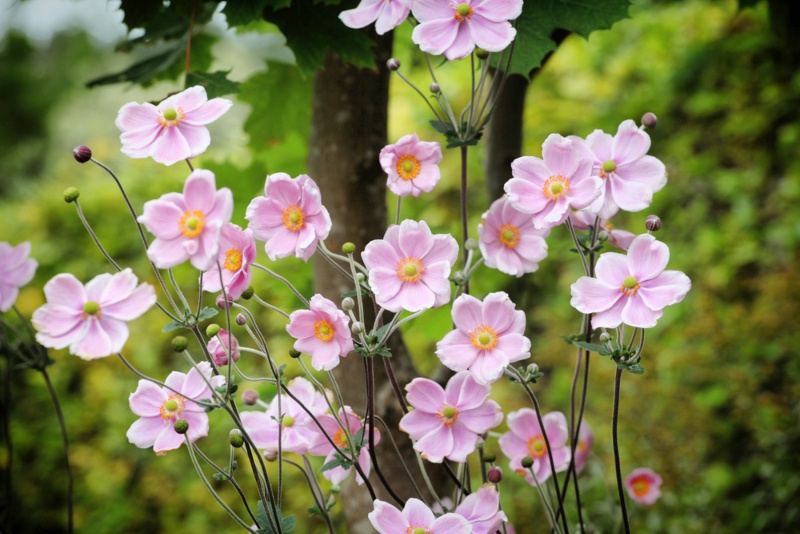
This anemone produces a mound of foliage that reaches a height of 2 feet with wiry flower stems that rise above the foliage to a height of 3 to 4 feet to show off its pale pink flowers in late summer and early fall. It thrives in USDA plant hardiness zones 4 through 7 and prefers full to partial sun. Like other Japanese anemones, it will benefit from some shade during the hottest part of the day.
Spring and Early Summer Blooming Anemones
Tuberous species of anemones are grown from corms, fattened tuberous roots similar to blubs, and are planted in the fall. These anemones bloom in the spring or early summer. Blooms typically last for 4 to 6 weeks and the foliage remains for another 4 to 8 weeks when it dies back and then returns again the following spring.
Grecian Windlfowers (anemone ‘blanda‘)
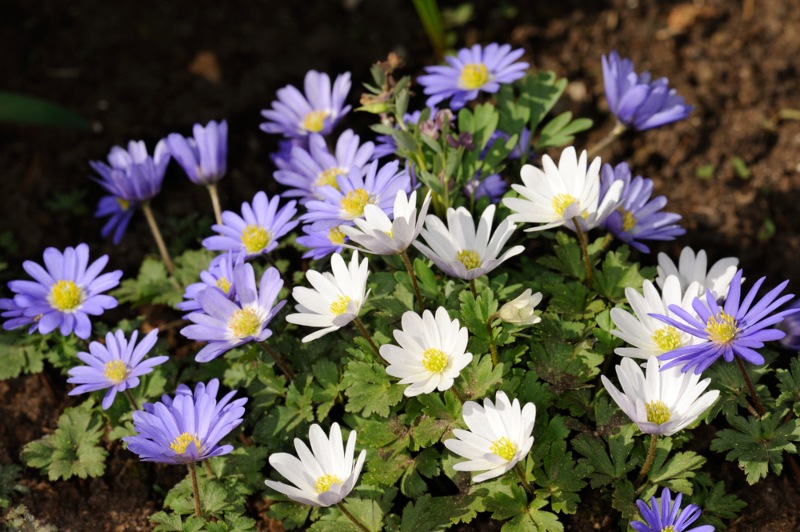
These daisy-like flowers appear in early spring, often before the snow has melted completed. They grow to heights of 4 to 6 inches. The most common color is deep blue, but the flowers can range in color from white and pastel pinks to magenta and mauve with many lovely bicolors are well. Grecian windflowers have a green-gold eye and close at night when dusk falls and re-open in the morning. They thrive in USDA plant hardiness zones 4 through 9 and prefer a location in full sun with humus rich, well-drained soil.
Poppy-Like Anemones
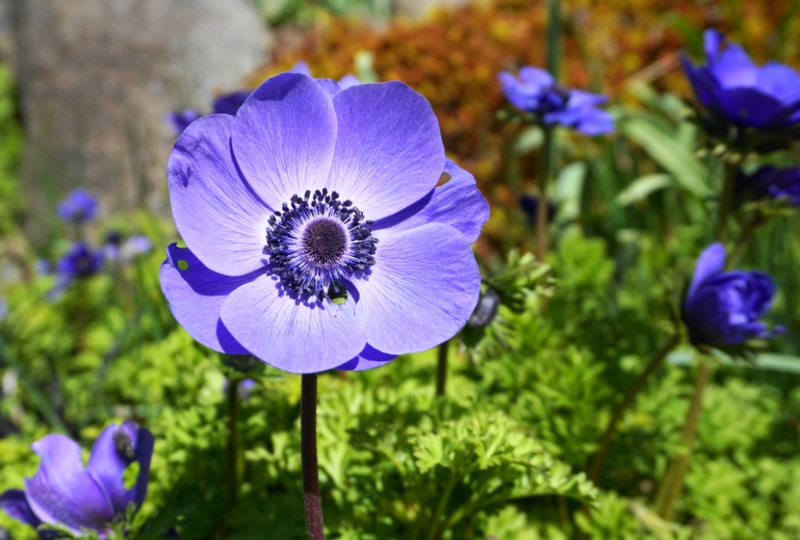
These anemones look like brilliant red poppies at a distance and bloom over a long period in the spring and early summer. They prefer full sun in humus rich, well-drained soil and thrive in USDA plant hardiness zones 7 through 10. They can be grown as annuals in cooler climates by planting the corms in the spring and lifting them in the fall.
Alpine and Woodland Varieties
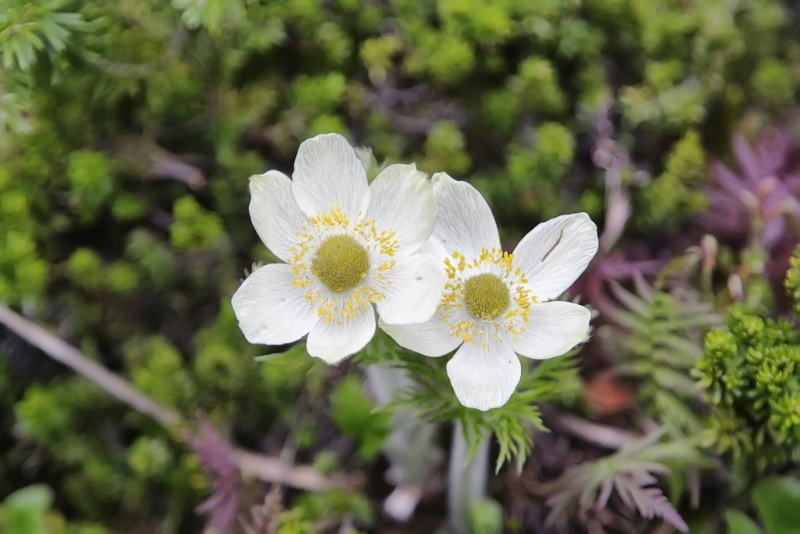
Alpine and woodland species (Anemone ‘canadensis’ and Anemone ‘oregana’) are native to North America and reproduce via fibrous roots. They are low growing, making them ideal as ground covers in woodland or wildflower gardens. These hardy plants survive in USDA plant hardiness zones 3 and 4. Anemone ‘oregana’ commonly produces blue flowers, but they can also be pink, purple, violet to red. Anemone ‘canadensis’ produces white flowers with soft yellow centers. It can grow to heights of 1 to 2 feet and thrives in USDA plant hardiness zones 3 through 8.
Anemones are easy-to-grow perennials that bring color and movement to the perennial bed, but they can also be used for borders, tucked into nooks, planted in rock gardens or even added to wildflower or woodland gardens. Consider the size and blooming time of the variety you purchase as there is great variation among anemone species.

